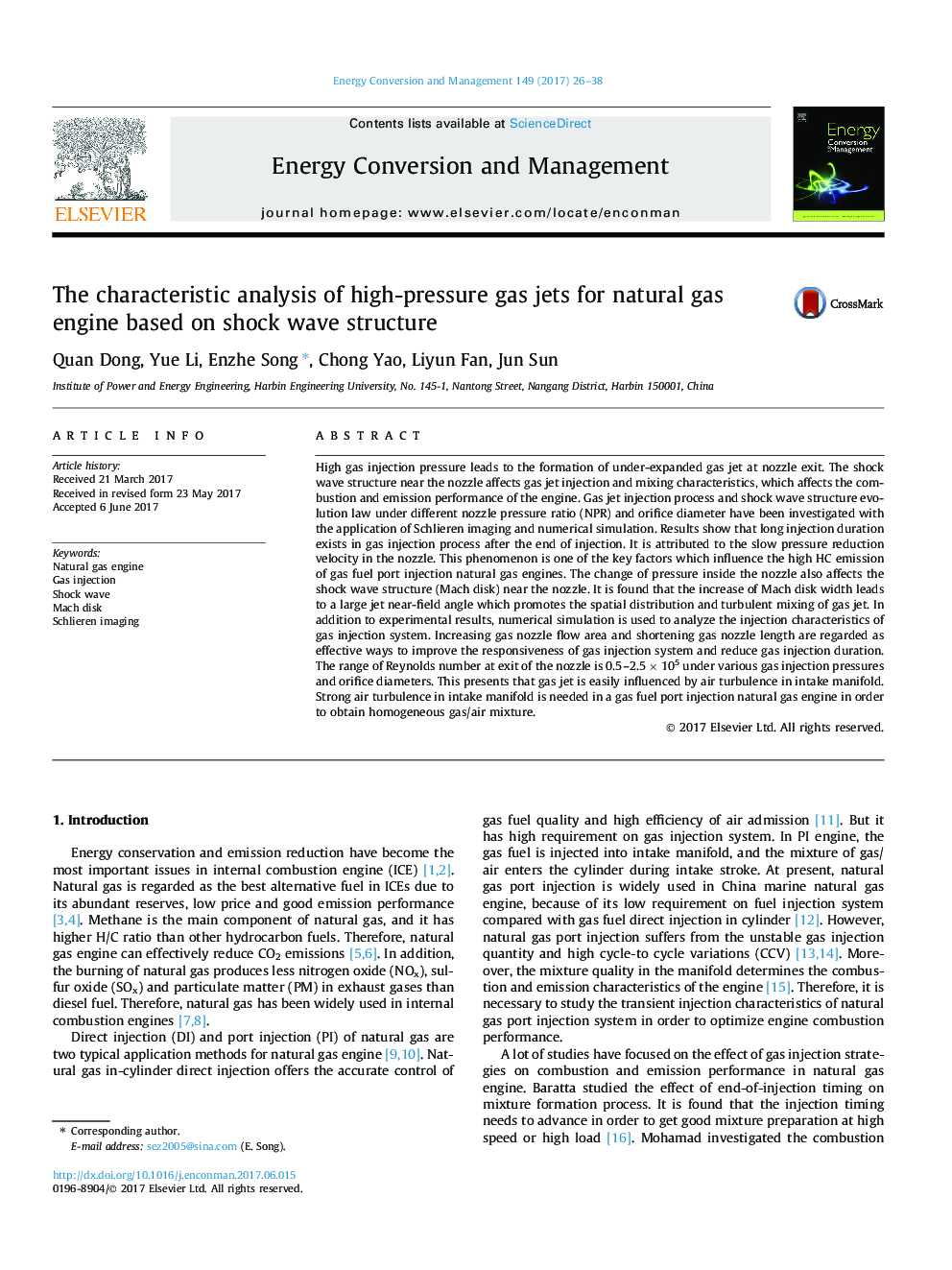| Article ID | Journal | Published Year | Pages | File Type |
|---|---|---|---|---|
| 5012419 | Energy Conversion and Management | 2017 | 13 Pages |
Abstract
High gas injection pressure leads to the formation of under-expanded gas jet at nozzle exit. The shock wave structure near the nozzle affects gas jet injection and mixing characteristics, which affects the combustion and emission performance of the engine. Gas jet injection process and shock wave structure evolution law under different nozzle pressure ratio (NPR) and orifice diameter have been investigated with the application of Schlieren imaging and numerical simulation. Results show that long injection duration exists in gas injection process after the end of injection. It is attributed to the slow pressure reduction velocity in the nozzle. This phenomenon is one of the key factors which influence the high HC emission of gas fuel port injection natural gas engines. The change of pressure inside the nozzle also affects the shock wave structure (Mach disk) near the nozzle. It is found that the increase of Mach disk width leads to a large jet near-field angle which promotes the spatial distribution and turbulent mixing of gas jet. In addition to experimental results, numerical simulation is used to analyze the injection characteristics of gas injection system. Increasing gas nozzle flow area and shortening gas nozzle length are regarded as effective ways to improve the responsiveness of gas injection system and reduce gas injection duration. The range of Reynolds number at exit of the nozzle is 0.5-2.5Â ÃÂ 105 under various gas injection pressures and orifice diameters. This presents that gas jet is easily influenced by air turbulence in intake manifold. Strong air turbulence in intake manifold is needed in a gas fuel port injection natural gas engine in order to obtain homogeneous gas/air mixture.
Related Topics
Physical Sciences and Engineering
Energy
Energy (General)
Authors
Quan Dong, Yue Li, Enzhe Song, Chong Yao, Liyun Fan, Jun Sun,
